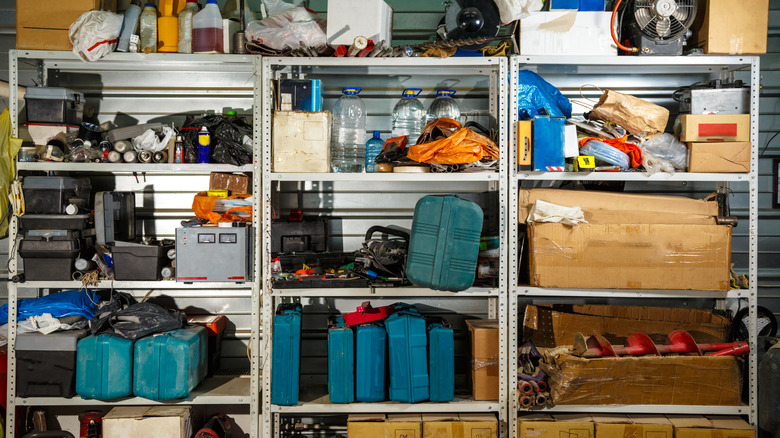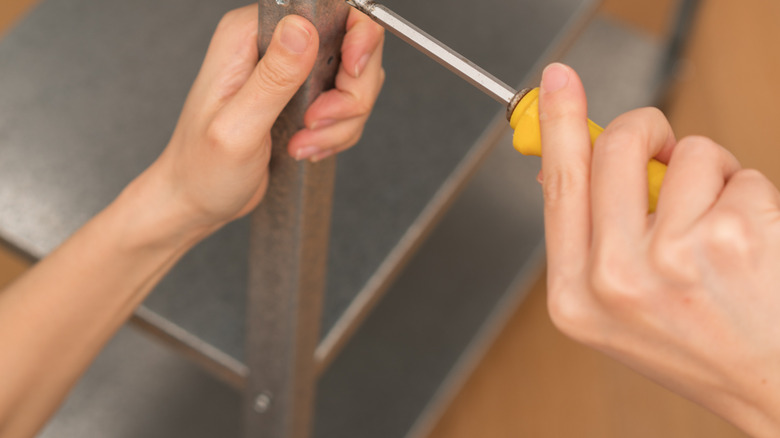The Pros And Cons Of Plastic Shelving In Your Garage
We may receive a commission on purchases made from links.
Garages tend to accumulate clutter more than any other room in your home, leaving the space feeling cramped and disorganized. With plenty of budget-friendly ways to tidy up your garage, plastic shelving stands out as the most affordable option. But they are accompanied by a series of drawbacks that might make them a less effective storage system. So, are they right for your garage?
Plastic shelving offers a number of advantages that make them a popular choice for garage organization. They are moisture-resistant and built to withstand the unpredictable conditions of your garage, ranging from fluctuating temperatures to moisture levels. It's ideal for moderate storage needs, from organizing your garden tools to housing seasonal decorations. Their lightweight design makes them easy to move, allowing you to rearrange your space as necessary. Plastic shelving is known for its affordability, often costing less than $100 per unit. With easy assembly and installation, they can be an accessible and budget-friendly way to generate a bit of extra storage in your garage.
Despite its numerous advantages, plastic shelving doesn't come without several notable drawbacks. It's not designed for heavy-duty storage, so power tools and dense equipment can cause the shelves to bend or warp over time. Overloading can lead to cracking or snapping, requiring frequent replacements that undermine its affordability. Its lack of durability makes it less suitable for long-term or demanding use. Plastic shelves are more prone to instability and damage from bumps or shifts around your space. For those with heavier storage needs or high-traffic garages, investing in sturdier materials may prove to be more reliable and cost-effective in the long run.
Alternatives to plastic shelving
Metal and wood shelving provide sturdy alternatives to plastic and can cater to different storage needs depending on their use. Metal shelves are extremely durable and resilient, a long-lasting storage solution that can tolerate wear and tear. Designed to withstand heavy-duty loads, they're ideal for bulky storage projects. On the other hand, wooden shelves offer a balance between durability and customizability, providing opportunities for the best DIY garage hacks. They offer a moderate amount of storage capacity, falling between plastic and metal. Additionally, wooden shelving is entirely customizable, allowing you to fit it to any awkward spaces that might be unused in your garage. Choosing the right material for your garage storage is ultimately up to your individual needs, whether you're looking for a cheap solution or something more suitable for long-term bulky organization.
However, both of these materials are not without their own set of drawbacks. For starters, metal shelves are made of heavy industrial materials, which can make it difficult to rearrange your space. They can be a hassle to move around in your garage, and instead serve better as a semi-permanent addition to your space. Additionally, metal garage shelving is prone to rusting in fluctuating moisture levels. This can quickly be remedied with an at-home rust resistant sealant or by purchasing pre-sealed shelves, but they will be more expensive. Wooden shelving can also struggle in the unpredictable condition of your garage, warping and molding when exposed to moisture. One of the best ways to protect your garage from mold growth is to use something like the Multi-surface Waterproof Stain on your shelves.

